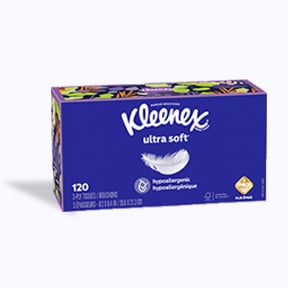
You brought home a cute kitten and suddenly you or someone in your home is coughing. Or sneezing, or their eyes are watering. Yes, all tell-tale signs of an allergy to cats. Scientific studies indicate that children are actually more allergic to cats than to dogs, even though the cause is very similar.
And in general, cat allergies are twice as likely as a dog allergy.
The difference is a tiny, not very cuddly, protein allergen called Fel d 1. This is the actual cause of feline allergies. Invisible to the human eye, Fel d 1 is produced mostly by glands underneath the cat’s skin. It’s also found in cat saliva, urine, feces, fur, and dander (the cat’s dead skin cells). Smaller makes the problem bigger, because it means that the allergen is lighter. When disturbed, it will float in the air for thirty minutes or more.
Not only is it tiny it’s also sticky. Clinging to everything around your home. Clothes, carpets, rugs and upholstery. Even after multiple washes or when the pet is no longer in the home, it lingers on. And then it’s our turn, when they’re absorbed by us, through our skin pores.
Cat allergies are cumulative, which means they build up over time. Prolonged exposure will eventually lead to an allergic reaction. Cat allergies are just as unpredictable as cats too. They can become milder over time and they can also become worse. Consider carefully your health and well-being and that of your family. If it’s only a mild allergy, then nothing to worry about. A more serious cat allergy can lead to something more problematic, including asthma. A long-term issue, making breathing very uncomfortable.
Nine cool cat tips to help you with your allergy
What is the best course of action if you have a cat allergy? To not have a cat and avoid all contact with cats. Obviously, that’s not the answer when the cat is a loved member of the family, or your companion. Here are nine ways to relieve your allergy, so you don’t have to live under the cat’s foot!
- Even the smallest amount of contact can trigger your allergy. Try to limit your exposure to the cat, get another family member to feed them or empty the litter tray.
- If you have a male cat, make sure he’s neutered, that will dramatically decrease the levels of harmful allergens. Even for females, spaying lowers Fel d 1 levels.
- Consider using an organic indoor allergen neutralizer. Many sources online are enthusiastic about herbal cat allergy sprays, which can considerably reduce cat allergens and the positive effect can last for weeks.
- Your allergy problem can originate from the cat’s litter tray: your pet’s urine or solid waste. Change the litter (or better, get someone else to change the litter) every other day.
- Try a HEPA (High Efficiency Particulate Air) filter vacuum cleaner. There is evidence suggesting that the best ones can remove the vast majority (even as much as 99 %) of all dust, hairs and dander.
- Use a HEPA air purifier daily. Studies show that they can significantly reduce the cat allergens in the air.
- Cat allergies can be treated with standard allergy products, including antihistamines, and decongestants. But it is wise to see your doctor first, for a professional opinion of what you need.
- Create some boundaries in your home, some places where your beloved cat isn’t allowed to go. Especially places like the bedroom where you spend a considerable amount of time.
- Washing your hands regularly can also help. This helps you avoid the transfer of cat dander from your hands to your face, which can cause allergy flare-up.
Check out Kleenex® Lotion™ tissues, which are designed to nourish skin with daily moisturizers, making them perfect for dealing runny noses or watery eyes caused by allergies.





